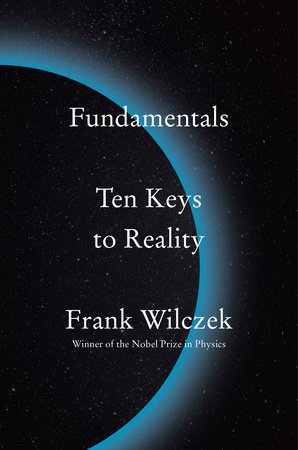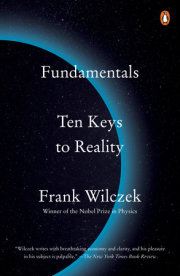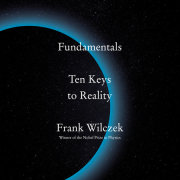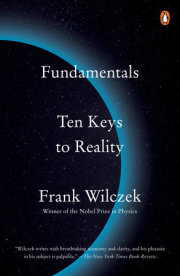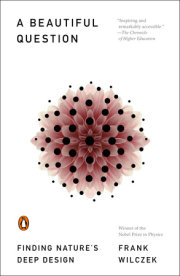Introduction
I
The universe is a strange place.
To newborn infants, the world presents a jumble of bewildering impressions. In sorting it out, a baby soon learns to distinguish between messages that originate from an internal world and those that originate from an external world. The internal world contains both feelings, such as hunger, pain, well-being, and drowsiness, and the netherworld of dreams. Within it, too, are private thoughts, such as those that direct her gaze, her grasp, and, soon, her speech.
The external world is an elaborate intellectual construction. Our baby devotes much of her time to making it. She learns to recognize stable patterns in her perception that, unlike her own body, do not respond reliably to her thoughts. She organizes those patterns into objects. She learns that those objects behave in somewhat predictable ways.
Eventually our baby, now a child, comes to recognize some of the objects as beings similar to herself, beings with whom she can communicate. After exchanging information with those beings, she becomes convinced that they, too, experience internal and external worlds and, remarkably, that all of them share many objects in common, and that those objects obey the same rules.
II
Understanding how to control the common external world—in other words, the physical world—is, of course, a vital practical problem, with many aspects. For example, to thrive in a hunter-gatherer society, our child would have to learn where to find water; which plants and animals are good to eat, and how to find, raise, or hunt them; how to prepare and cook food, and many other facts and skills.
In more complex societies, other challenges arise, such as how to make specialized tools, how to build lasting structures, and how to keep track of time. Successful solutions to the problems posed by the physical world get discovered, shared, and accumulated over generations. They become, for each society, its “technology.”
Nonscientific societies often develop rich and complex technologies. Some of those technologies enabled—and still do enable—people to thrive in difficult environments, such as the Arctic or the Kalahari Desert. Others supported the construction of great cities and impressive monuments, such as the Egyptian and Mesoamerican pyramids.
Still, throughout most of human history, prior to the emergence of the scientific method, the development of technologies was haphazard. Successful techniques were discovered more or less by accident. Once stumbled upon, they were transmitted in the form of very specific procedures, rituals, and traditions. They did not form a logical system, nor was there a systematic effort to improve them.
Technologies based on “rules of thumb” allowed people to survive, reproduce, and, often, to enjoy some leisure and achieve satisfying lives. For most people, in most cultures, over most of history, that was enough. People had no way to know what they were missing, or that what they were missing might be important to them.
But now we know that they were missing a lot. This figure, which shows the development of human productivity with time, speaks for itself, and it speaks volumes.
III
The modern approach to understanding the world emerged in Europe in the seventeenth century. There were partial anticipations earlier, and elsewhere. But the constellation of breakthroughs known as the Scientific Revolution provided inspiring examples of what could be achieved by human minds creatively engaged with the physical world, and the methods and attitudes that led to those breakthroughs gave clear models for future exploration. With that impetus, science as we know it began. It has never looked back.
The seventeenth century saw dramatic theoretical and technological progress on many fronts, including in the design of mechanical machines and ships, of optical instruments (including, notably, microscopes and telescopes), of clocks, and of calendars. As a direct result, people could wield more power, see more things, and regulate their affairs more reliably. But what makes the so-called Scientific Revolution unique, and fully deserving of the name, is something less tangible. It was a change in outlook: a new ambition, a new confidence.
The method of Kepler, Galileo, and Newton combines the humble discipline of respecting the facts and learning from Nature with the systematic chutzpah of using what you think you’ve learned aggressively, applying it everywhere you can, even in situations that go beyond your original evidence. If it works, then you’ve discovered something useful; if it doesn’t, then you’ve learned something important. I’ve called that attitude Radical Conservatism, and to me it’s the essential innovation of the Scientific Revolution.
Radical Conservatism is conservative because it asks us to learn from Nature and to respect facts—key aspects of what is called the scientific method. But it is radical, too, because it pushes what you’ve learned for all it’s worth. This is no less essential to how science actually works. It provides science with its cutting edge.
IV
This new outlook was inspired, above all, by developments in a subject that even in the seventeenth century was already ancient and well developed: celestial mechanics, the description of how objects in the sky appear to move.
Since long before the beginning of written history, people have recognized such regularities as the alternation of night and day, the cycle of seasons, the phases of the Moon, and the orderly procession of stars. With the rise of agriculture, it became crucial to keep track of seasons, in order to plant and harvest at the most appropriate times. Another powerful, if misguided, motivation for accurate observations was the belief that human life was directly connected to cosmic rhythms: astrology. In any case, for a mixture of reasons—including simple curiosity—people studied the sky carefully.
It emerged that the vast majority of stars move in a reasonably simple, predictable way. Today, we interpret their apparent motion as resulting from Earth rotating around its axis. The “fixed stars” are so far away that relatively small changes in their distance, whether due to their own proper motion or to the motion of Earth around the Sun, are invisible to the naked eye. But a few exceptional objects—the Sun, the Moon, and a few “wanderers,” including the naked-eye planets Mercury, Venus, Mars, Jupiter, and Saturn—do not follow that pattern.
Ancient astronomers, over many generations, recorded the positions of those special objects, and eventually learned how to predict their changes with fair accuracy. That task required calculations in geometry and trigonometry, following complicated, but perfectly definite, recipes. Ptolemy (c. 100–170) brought this material together in a mathematical text that became known as Almagest. (Magest is a Greek superlative meaning “greatest.” It has the same root as “majestic.” Al is simply Arabic for “the.”)
Ptolemy’s synthesis was a magnificent achievement, but it had two shortcomings. One was its complexity and, related to this, its ugliness. In particular, the recipes it used to calculate planetary motions brought in many numbers that were determined purely by fitting the calculations to observations, without deeper guiding principles connecting them. Copernicus (1473–1543) noticed that the values of some of those numbers were related to one another in surprisingly simple ways. These otherwise mysterious, “coincidental” relationships could be explained geometrically, if one assumed that Earth together with Venus, Mars, Jupiter, and Saturn all revolve around the Sun as center (and the Moon further revolves around Earth).
The second shortcoming of Ptolemy’s synthesis is more straightforward: It simply isn’t accurate. Tycho Brahe (1546–1601), in an anticipation of today’s “Big Science,” designed elaborate instruments and spent a lot of money building an observatory that enabled much more precise observations of planetary positions. The new observations showed unmistakable deviations from Ptolemy’s predictions.
Johannes Kepler (1571–1630) set out to make a geometric model of planetary motion that was both simple and accurate. He incorporated Copernicus’s ideas and made other important technical changes to Ptolemy’s model. Specifically, he allowed the planetary orbits around the Sun to deviate from simple circles, substituting ellipses, with the Sun at one focus. He also allowed the rate at which the planets orbit the Sun to vary with their distance from it, in such a way that they sweep out equal areas in equal times. After those reforms, the system was considerably simpler, and it also worked better.
Meanwhile, back on the surface of Earth, Galileo Galilei (1564–1642) made careful studies of simple forms of motion, such as the way balls roll down inclined planes and how pendulums oscillate. Those humble studies, putting numbers to positions and times, might seem pitifully inadequate to addressing big questions about how the world works. Certainly, to most of Galileo’s academic contemporaries, concerned with grand questions of philosophy, they seemed trivial. But Galileo aspired to a different kind of understanding. He wanted to understand something precisely, rather than everything vaguely. He sought—and found—definite mathematical formulas that described his humble observations fully.
Isaac Newton (1643–1727) weaved together Kepler’s geometry of planetary motion and Galileo’s dynamical description of motion on Earth. He demonstrated that both Kepler’s theory of planetary motions and Galileo’s theory of special motions were best understood as special cases of general laws, laws that apply to all bodies everywhere and for all time. Newton’s theory, which we now call classical mechanics, went from triumph to triumph, accounting for the tides on Earth, predicting the paths of comets, and empowering new feats of engineering.
Newton’s work showed, by convincing example, that one could address grand questions by building up from a detailed understanding of simple cases. Newton called this method analysis and synthesis. It is the archetype of scientific Radical Conservatism.
Here is what Newton himself had to say about that method:
As in mathematics, so in natural philosophy the investigation of difficult things by the method of analysis ought ever to precede the method of composition. This analysis consists of making experiments and observations, and in drawing general conclusions from them by induction. . . . By this way of analysis we may proceed from compounds to ingredients, and from motions to the forces producing them; and in general from effects to their causes, and from particular causes to more general ones till the argument end in the most general. This is the method of analysis: and the synthesis consists in assuming the causes discovered and established as principles, and by them explaining the phenomena preceding from them, and proving the explanations.
V
Before leaving Newton, it seems appropriate to add another quotation, which reflects his kinship with his predecessors Galileo and Kepler, and with all of us who follow in their footsteps:
To explain all nature is too difficult a task for any one man or even for any one age. ’Tis much better to do a little with certainty & leave the rest for others that come after you.
A more recent quotation from John R. Pierce, a pioneer of modern information science, beautifully captures the contrast between the modern concept of scientific understanding and all other approaches:
We require that our theories harmonize in detail with the very wide range of phenomena they seek to explain. And we insist that they provide us with useful guidance rather than with rationalizations.
As Pierce was acutely aware, this heightened standard comes at a painful price. It involves a loss of innocence. “We will never again understand nature as well as Greek philosophers did. . . . We know too much.” That price, I think, is not too high. In any case, there’s no going back.
Copyright © 2021 by Frank Wilczek. All rights reserved. No part of this excerpt may be reproduced or reprinted without permission in writing from the publisher.

